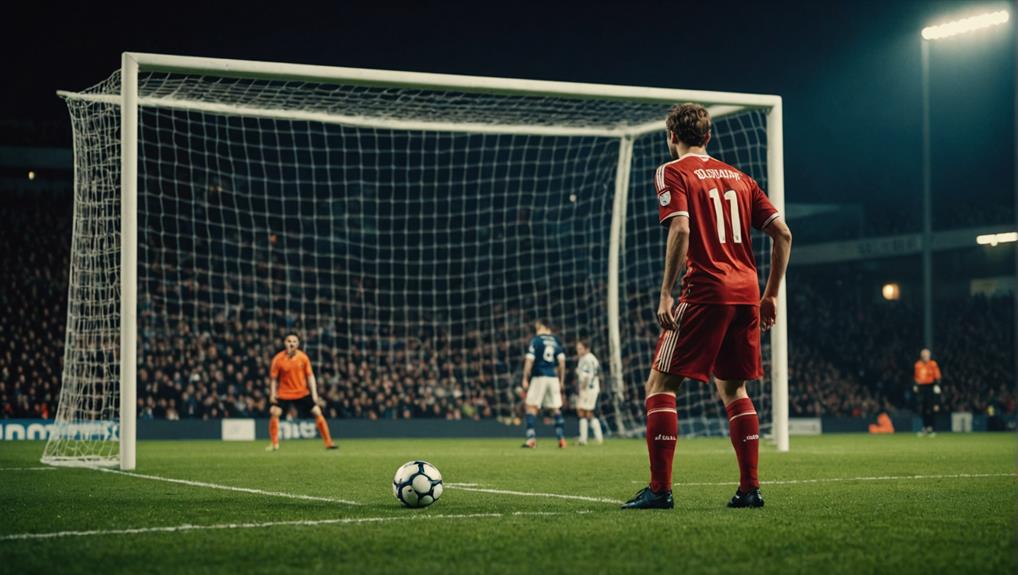
What Is a Free Kick in Soccer? Rules and Strategies
August 14, 2024In soccer, free kicks offer chances to score directly or create intricate plays to outsmart opponents. Direct kicks let you shoot straight at the goal after serious fouls, while indirect kicks need another player's touch first for less severe offenses. The referee stops play and positions players correctly for fairness. Maximizing defensive walls, using chip kicks, and coordinating tactics boost scoring opportunities. Opponents must maintain distance during free kicks to prevent interference. Quick free kick handling can surprise rivals and lead to scoring chances. Learning about essential gear and wall formations can enhance your free kick execution.
Types of Free Kicks
When it comes to free kicks in soccer, understanding the different types is vital for strategic gameplay. Direct free kicks allow the player to aim directly at the goal without needing another touch, making them ideal for scoring opportunities from a distance.
On the other hand, indirect free kicks require another player to touch the ball before a goal attempt can be made, often leading to more intricate set plays.
Direct free kicks are awarded for more serious fouls, providing a direct chance to score, while indirect free kicks are given for less severe offenses, usually involving technical infractions like goalkeeper handling violations or dangerous play.
Knowing when to utilize each type of free kick is essential for maximizing scoring chances and creating strategic advantages on the field.
Understanding the distinction between direct and indirect free kicks is fundamental for executing effective set pieces in soccer, as it allows teams to capitalize on different situations and tailor their approach based on the circumstances of the game.
Free Kick Process
Understanding the free kick process involves knowing the rules and procedures that come into play when a team is awarded a free kick in soccer. When a foul or infringement occurs, the referee stops play and awards a free kick to the opposing team.
During a free kick, players must adhere to specific rules governing their positioning, the distance between the ball and the defensive wall, and the placement of the ball. These rules guarantee a fair opportunity for both the attacking and defending teams.
The positioning of players, both from the team taking the free kick and the defending team, plays an essential role in the success of the set-piece. Whether it's a direct free kick, where a player can score directly, or an indirect free kick, where a pass must be made before attempting a goal, understanding the nuances of the free kick process is essential for maximizing scoring chances and defensive strategies in soccer.
Direct Vs. Indirect Kicks
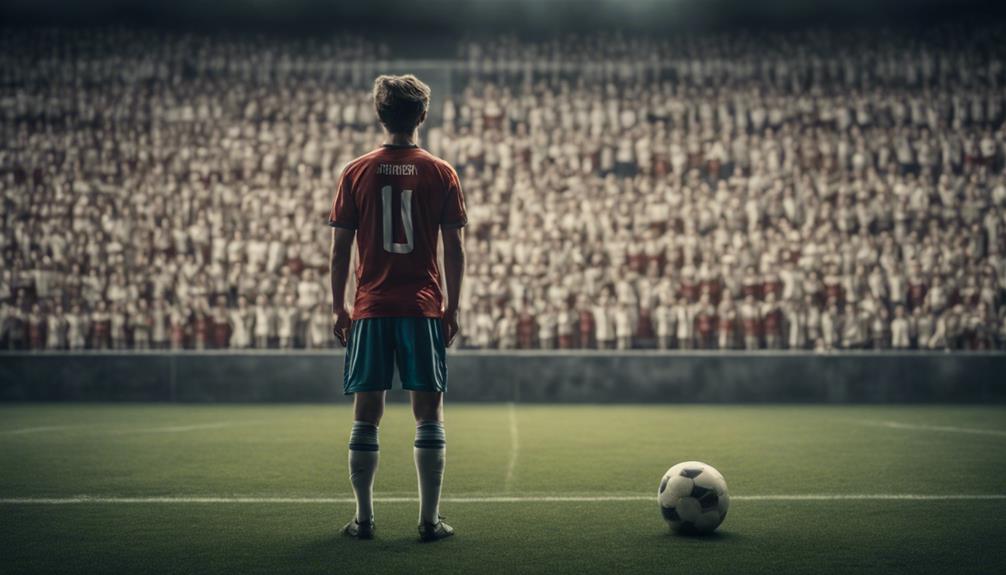
Players in soccer must differentiate between direct and indirect kicks during free kick situations, as each type offers distinct scoring opportunities and strategic advantages.
Direct free kicks allow the player to shoot directly at the goal without needing another touch, providing a straightforward path to scoring. These kicks are typically awarded for more serious fouls, presenting a prime chance to take a direct shot at the goal and potentially score.
On the other hand, indirect free kicks require another player to touch the ball before a goal can be scored. These kicks are given for less serious offenses and are often utilized for technical plays and set-piece strategies. Indirect kicks demand teamwork and coordination to set up a scoring opportunity, as the ball must be touched by another player before finding the back of the net.
Understanding the differences between direct and indirect kicks is essential for players to capitalize on the unique advantages each type offers when facing free kick situations.
Scoring From Free Kicks
Scoring from free kicks in soccer directly impacts the team's performance during a match.
When it comes to indirect free kicks, the method of scoring differs from direct free kicks.
In the case of an indirect free kick, the ball must touch another player before entering the goal for the goal to count.
If the ball from an indirect free kick goes straight into the goal without an additional touch, possession switches to the defending team, and no goal is awarded.
This rule emphasizes the collaborative nature of soccer, where goals are often the result of teamwork. It also adds an extra layer of strategy to free kicks, as players need to coordinate to ensure a successful goal.
Additionally, in specific situations, if an indirect free kick results in the ball entering the goal without another touch, a goal kick is given to the defending team, allowing them a chance to regain possession and control of the game.
Free Kick Strategies
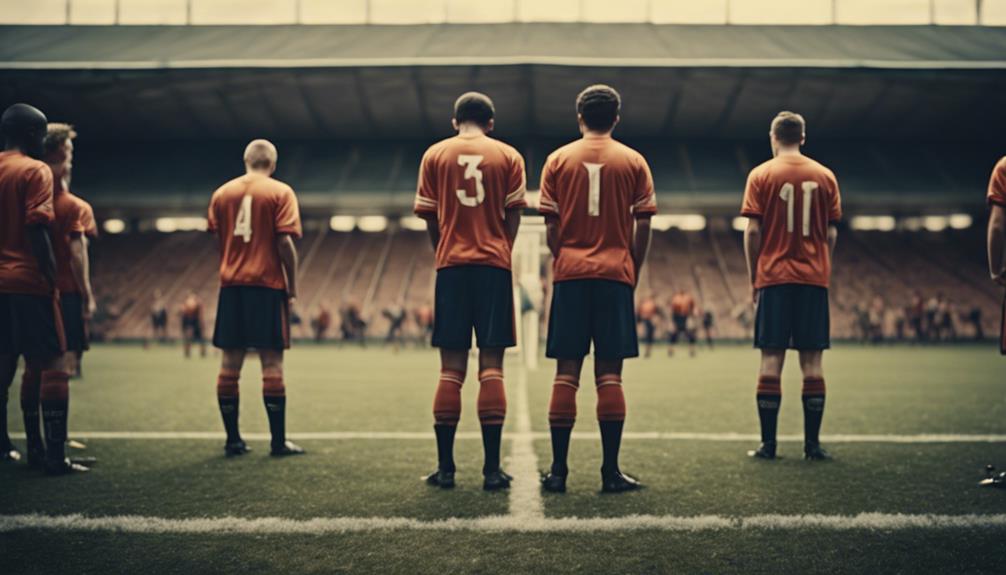
When setting up for a free kick in soccer, incorporating strategic elements can greatly impact the success of the play. One key strategy is to utilize defensive walls effectively. Defensive walls are formed by players from the defending team to block the path of the ball during the free kick, making it challenging for the opposing team to score.
Another important strategy is to use chip and curve kicks. These techniques can add accuracy and surprise to the free kick, making it harder for the goalkeeper to anticipate the ball's trajectory.
Additionally, aiming for direct goal shots from close range can be an effective strategy to increase the likelihood of scoring from a free kick.
Lastly, integrating tactics such as feints and deception can help in outsmarting the defense and creating opportunities for a successful free kick. By employing these free kick strategies, teams can enhance their chances of converting set-piece opportunities into goals.
Essential Soccer Gear
For best performance during free kicks in soccer, having the right essential gear is crucial. When preparing for free kicks, make sure you have specialized cleats designed to provide the traction and accuracy needed to strike the ball effectively.
Additionally, training mannequins are necessary for practicing wall formations, helping you hone your skills in bypassing defensive barriers.
Quality gear such as soccer balls and shin guards are also needed for safe and efficient free kick practice sessions. Investing in reliable equipment can make a significant difference in your performance on the field.
Consider utilizing gear from SOCCER.COM for your free kick needs, taking advantage of membership benefits like discounts and rewards. By joining Goal Club, you can access exclusive offers and rewards that enhance your overall soccer gear buying experience.
Equip yourself with the right tools and gear to elevate your free kick game and maximize your performance on the pitch.
Free Kick Wall Formation
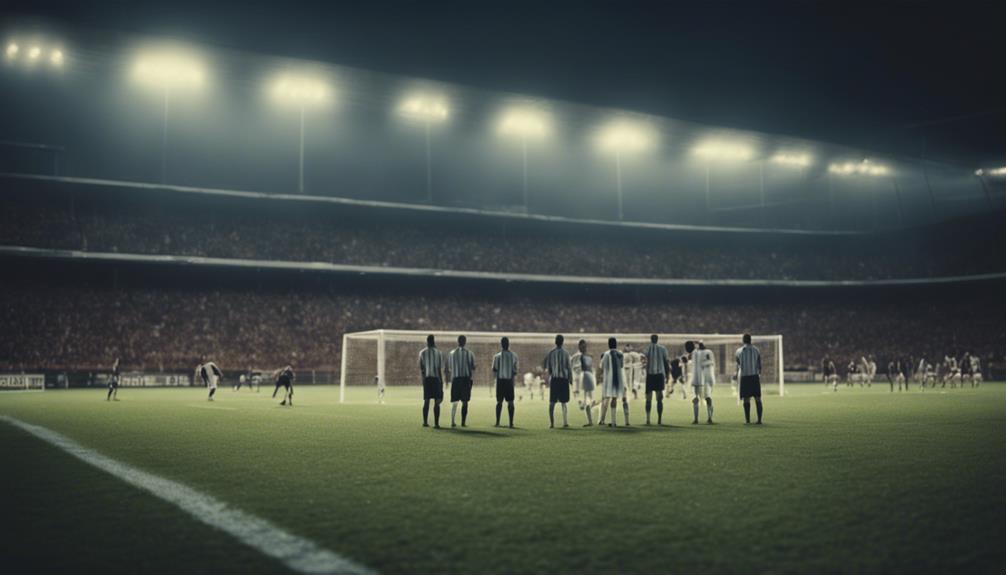
To effectively defend against a free kick in soccer, the defending team typically organizes a wall of 3 or more players to obstruct the path of the incoming ball. This wall formation is essential in creating a barrier that makes it challenging for the free kick taker to score directly.
As the attacking team prepares to take the free kick, there's a specific distance rule that must be adhered to. The attacking team must maintain a distance of at least 1 meter from the wall until the ball is in play. Referees play a crucial role in ensuring that this distance rule is followed during the execution of the free kick.
Failure to comply with the distance rule can lead to consequences such as the attacking team being granted a retake of the free kick. Hence, the wall formation and enforcement of the distance rule are key elements in the strategic play of defending against free kicks in soccer.
Free Kick Execution
Executing a free kick in soccer involves various techniques and strategies to aim for a successful outcome. When taking a free kick, players have several options to keep in mind:
- Lifting the Ball: One common technique is lifting the ball with the foot or both feet simultaneously. This method allows players to bypass the defensive wall or aim for a higher trajectory towards the goal.
- Feinting to Deceive: Players are permitted to feint before taking the kick. By deceiving opponents with body movements or fake shots, the free-kick taker can create openings in the opposition defense or confuse the goalkeeper.
- Deliberate Kicks: While fair play is important, deliberate kicks at opponents to retrieve the ball after the free kick has been taken are allowed. However, it's vital to make sure that these actions don't lead to careless or reckless play, as the referee will be monitoring the situation closely.
Opposition Interference
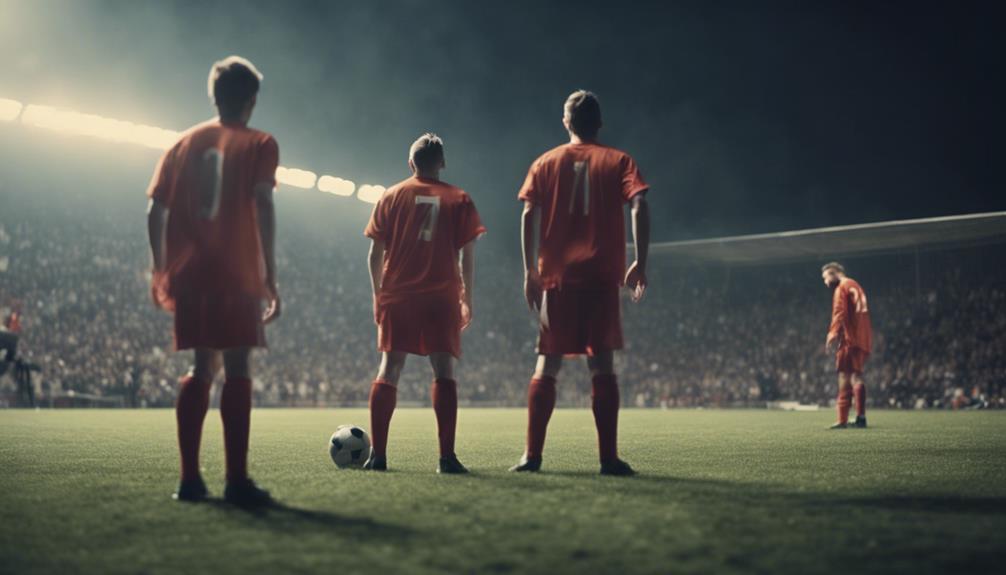
When taking a free kick in soccer, opponents are required to stay at least 9.15 meters away from the ball. Failure to adhere to this distance rule can lead to a retake of the free kick.
Handling quick free kicks efficiently can catch opponents off guard and create scoring opportunities for your team.
Distance Requirement Enforcement
Enforcing the minimum distance requirement of 9.15 meters from the ball is crucial during a free kick in soccer to guarantee fair play and prevent interference from opponents. The implementation of this rule guarantees that the kicking team has a fair opportunity to take the free kick without unnecessary obstruction.
Here's what you need to know about distance requirement enforcement:
- Compliance: Opponents must promptly retreat to the minimum distance once the referee indicates the free kick. Failure to do so can lead to penalties or a retake of the free kick.
- Quick Free Kicks: If opponents fail to respect the minimum distance and interfere with a quick free kick, the referee may allow the kick to proceed to maintain the flow of the game.
- Referee's Role: It's the duty of the referee to monitor the opponents' distance, enforce the minimum distance rule, and take appropriate action against any infringements to secure a fair free kick.
Retake Conditions Clarification
To maintain fairness during a free kick in soccer, sticking to the minimum distance rule is essential to avoid retake situations because of opposition interference. If opponents encroach on the minimum distance required during a free kick, the kicking team has the right to request a retake. This rule guarantees that the kicking team has the necessary space and opportunity to execute the free kick without interference. By adhering to the minimum distance rule, opponents contribute to preserving the integrity of the game and upholding fairness on the field.
Opponents must respect the designated distance to prevent any retake scenarios that could result from their interference. This regulation is in place to protect the integrity of the game and make sure that free kicks are taken without any hindrance. As a result, it's important for players to be mindful of their positioning during free kicks to avoid causing any retake situations due to not maintaining the minimum distance required by the rules.
Quick Free Kick Handling
Opponents' interference during quick free kicks in soccer can disrupt the flow of play and may lead to disciplinary action by the referee.
When handling quick free kicks, it's essential to be aware of the following:
- Obstructing the free kick: Opponents mustn't block the attacking team's attempt to take a quick free kick. Doing so can result in penalties from the referee.
- Delaying the restart: Any intentional delay caused by opponents can hinder the attacking team's momentum and lead to frustration. Referees are vigilant in penalizing such actions.
- Maintaining distance: Opponents are required to keep the minimum distance from the ball during a quick free kick. Failing to do so can impede the attacking team's ability to restart play efficiently.
Conclusion
To sum up, mastering free kicks in soccer requires understanding the types of kicks, the process, and key strategies.
By practicing execution, perfecting wall formation, and overcoming opposition interference, you can increase your chances of scoring from a free kick.
Remember to stay focused, stay prepared, and stay confident in your abilities.
With determination and skill, you can become a free kick expert on the field.


